Donald Trump is holding the threat of 25% tariffs over auto parts and metals imports from Canada and Mexico, which could disrupt the North American automotive supply chain. The US president added that he will add new wider tariffs on finished vehicles, to be announced on April 2.
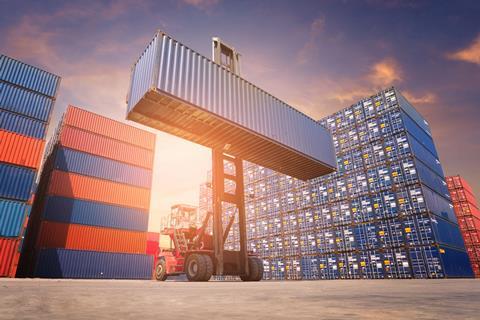
A North American trade in automotive parts worth $168.9 billion hangs in the balance as negotiations between the US, Canada and Mexico continue around the threatened imposition of 25% tariffs by the Trump administration next month.
The US president is also reinstating 25% tariffs on steel and aluminium imports, and is removing country-specific exceptions and quota deals. In a White House statement Trump said that “imports of steel articles from Canada and Mexico have increased significantly to levels that once again threaten to impair US national security”.
On Friday (February 14) Trump also announced he would be revealing wider automobile tariffs on April 2 this year, adding to the rush of import levies and to the global consternation of vehicle makers and suppliers.
Regarding the auto parts tariffs Trump said he wants stronger controls on border security and opioid trafficking. The move contravenes the existing US-Mexico-Canada Agreement (USMCA), which stipulates that 75% of vehicle content must be produced in North America for duty-free trade. Last Thursday the American Automotive Policy Council’s president Matt Blunt made a statement supporting Trump’s efforts to consider global trade but said ”Ford, GM and Stellantis continue to believe that vehicles and auto parts that meet the USMCA requirements should not be subject to additional tariffs.” The AAPC represents the interests of the three carmakers.
Uncertainty remains but the negotiating ploy to impose 25% tariffs has every prospect of being backed up with action, as it has with the 10% tariffs applied to a range of goods from China. That has resulted in China taking retaliatory trade measures, which started on February 10, including additional 10% tariffs on certain US finished vehicles and agricultural machinery. China is also applying export controls on the critical minerals it was supplying to the US, which could choke the lithium battery supply chain.
Trump’s 30-day postponement of new tariffs on Canadian and Mexican goods, including finished vehicles and automotive parts, could lead to a spike in cross-border shipments ahead of the March deadline. In a survey carried out by logistics provider CH Robinson shippers said the top risk to their supply chains in 2025 is changes in tariffs and trade policy, with 50% expressing that the uncertainty around tariffs and trade policy is a pain point for them. The survey results also showed that shippers are actively preparing for changes in tariffs and trade policy, including identifying where they can switch sourcing to save money, analysing customs data, evaluating cross-border strategies, running risk scenarios and lowering their dependence on Chinese imports..
“We are steadfast in our commitment to support our customers through times of uncertainty and change,” said Michael Castagnetto, president of North America surface transportation at CH Robinson. “That can be an automotive customer needing to pivot to more regional production, a retail customer rethinking inventory plans due to tariffs or an energy customer adjusting to a new regulatory environment.”
Automotive parts are the biggest commodity group traded between Mexico and the US, with 43% of the automotive parts the US buys globally coming from Mexico. Last year the US imported $81.1 billion-worth of parts from Mexico and it exported parts worth $38.8 billion there, according to the latest figures from the US Department of Commerce. North of the border Canada exported $19.4 billion-worth of parts to the US and imported parts worth $29.4 billion from it.
A tariff war would be highly disruptive to the North American automotive supply chain and the value of traded parts. Ford’s CEO Jim Farley recently said that it would wipe billions off the profits of North American carmakers.
| Value of US automotive parts trade with Mexico ($ billions) | ||
|---|---|---|
|
2024 |
2023 |
|
|
Imports from Mexico |
$81,174,684,076 (+3.5%) |
$78,428,415,520 |
|
Exports to Mexico |
$38,841,300,973 (+4.9%) |
$37,022,191,232 |
|
Total |
$120,015,985,041 (+3.9%) |
$115,450,606,752 |
Source: US Department of Commerce
| Value of US automotive parts trade with Canada ($ billions) | ||
|---|---|---|
|
2024 |
2023 |
|
|
Imports from Canada
|
$19,471,943,968 |
$19,978,830,504 |
|
Exports to Canada
|
$29,492,074,572 |
$31,705,918,255 |
|
Total
|
$48,964,018,540 |
$51,684,748,759 |
Source: US Department of Commerce
Automotive accounts for 26% of the value of goods moved from Mexico to the US, and 12% from Canada, according to government data crunched by supply chain market intelligence provider Freightwaves during an online roundtable discussion on Trump’s tariffs held on February 4.
Metals surge
On the imposition of steel and aluminium tariffs Trump said that import volumes of the metals from Canada and Mexico had increased from almost 7.8m metric tons in 2020 to 9.14m in 2024, including a surge across key product lines such as reinforcing bars.
“These surges have occurred while authorities in those countries have supported otherwise uncompetitive producers with subsidies and other interventions that have exacerbated the global excess capacity crisis,” said the White House statement from Trump. “In addition, increasing import volumes and including Mexico’s imports from China, support a conclusion that there is transhipment or further processing of steel mill articles from countries that remain subject to the additional ad valorem tariff proclaimed in Proclamation 9705, or from countries seeking to evade quantitative restrictions.”
At last November’s Automotive Logistics and Supply Chain Mexico conference, Francisco Gonzalez Diaz, executive president of the National Auto Parts Industry association (INA), said Mexico requires an environment of certainty and stability.
“To be truly competitive, we need a logistical, technological and governmental ecosystem that is fully aligned,” he said. That will help companies derive the best options in terms of cost, efficiency and sustainability.
Gonzalez said that for Mexico to reach its full potential as an automotive hub requires strong governmental and commercial policies that guarantee a long-term framework of certainty. “Mexico must prove that it can ensure the security in every link of the supply chain. This vision requires a strategic triple helix collaboration between the private sector, the government and the academy,” he said.
Trump tariffs: A timeline of impacts on automotive logistics
- 1
- 2
- 3
- 4
- 5
- 6
- 7
- 8
- 9
 Currently reading
Currently readingDonald Trump is imposing 25% tariffs on steel and aluminium from Canada and Mexico, and could include auto parts
- 10
- 11
- 12
- 13
- 14
- 15
- 16
- 17
- 18
- 19
- 20
- 21
- 22
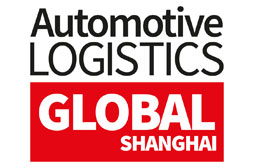


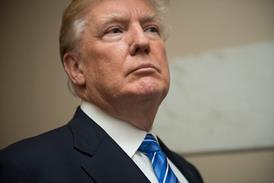



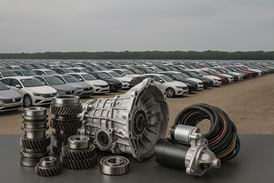






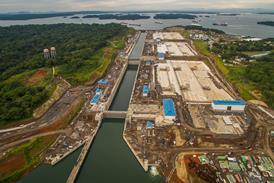









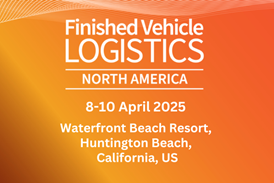
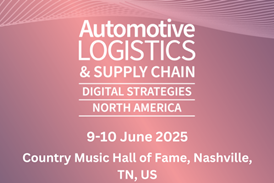
![Global[1]](https://d3n5uof8vony13.cloudfront.net/Pictures/web/a/d/s/global1_726550.svgz)
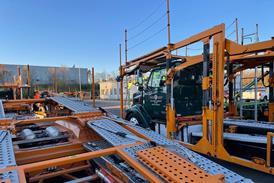
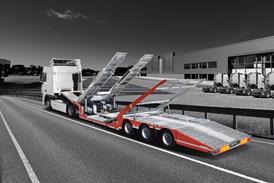
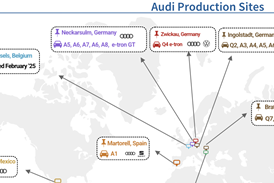
























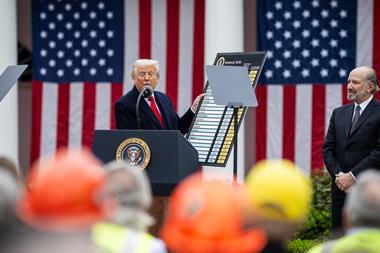

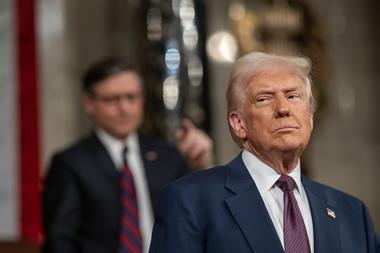
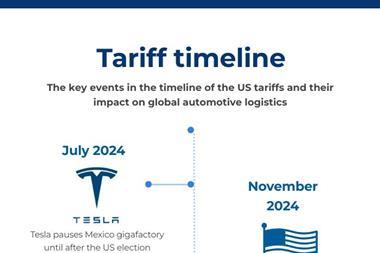

No comments yet